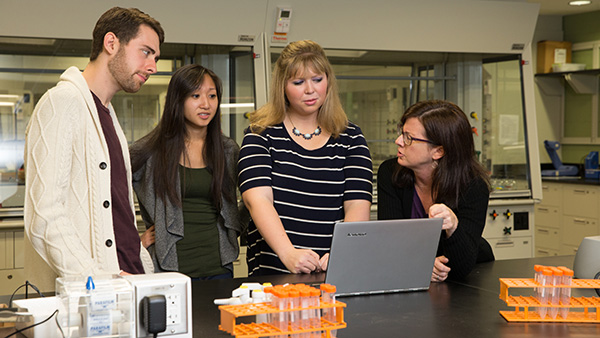
Introduction
Methods
- Small group projects/assignments
- Practicum/field placements
- Service-Learning
- Student teaching
- Study abroad
- Volunteer experiences
- Apprenticeships
- Cooperative education experiences
- Fellowships
Three Overarching Principles
A key component and possible outcome of experiential teaching is the transformative learning experience that occurs with a meaningful and well planned lesson.
Slavich and Zimbardo define transformational teaching as "the expressed or unexpressed goal to increase students' mastery of key course concepts while transforming their learning-related attitudes, values, beliefs, and skills" (Slavich & Zimbardo, 2012, p. 576).
According to Slavich & Zimbardo (2012), the three overarching principles of transformational teaching are:
- Facilitate students' acquisition and mastery of key course concepts.
- Enhance students' strategies and skills for learning and discovery.
- Promote positive learning-related attitudes, values, and beliefs in students. (p. 581)
Core Methods
The six core methods of transformational teaching described by (Slavich & Zimbardo, 2012) are:
- Establish a shared vision for a course.
- Provide modeling and mastery experiences.
- Challenge and encourage students intellectually.
- Personalize attention and feedback.
- Create experiential lessons.
- Promote pre-flection and reflection throughout the process.
The Experiential Learning Process
Experiential learning includes several steps as a process of transformational learning. This ensures the students integrate the content as well as their own experiences and growth into the learning.
- Experiencing, Exploring and Doing: Students will actively engage in a learning activity with the instructor serving as a mentor in the process.
- Sharing and Reflecting: This step is revisited throughout the process to encourage students to observe and reflect on their experiences and their reactions to the experience with others in the class or group.
- Processing and Analyzing: Students are allotted time in the class to process their experience and reflections relating them to the process, dynamics, themes, challenges, and successes, as well as lessons learned thus far.
- Generalizing Lessons Learned to Life and/or Their Profession: This is an important step which may occur throughout or at the end of the project for students to relate their experiences with connections to real life and/or their future profession.
- Application of Lessons Learned: Students will share how they will apply the lessons learned via skills, values, insights, and/or knowledge to their future and their profession. For some students, this is a recognition of the transformation of themselves, their identities, and a greater connection to their profession.
Instructor Responsibilities
The role of the instructor in experiential learning is very different from most other pedagogies. First and foremost, the students are at the center of the learning and the instructor serves as a facilitator/mentor of the process, offering guidance on a limited basis. The instructor serves as an intellectual coach for collaborative student teams to maximize students' learning, skill development, and personal growth (Slavich & Zimbardo, 2012). In this role, the instructor should empower students to take ownership of their learning and their project. This is how experiential learning will become transformative and meaningful for the student.
The following responsibilities were identified in the book Teaching for experiential learning: Five approaches that work by Wurdinger and Carlson (2010, p. 13):
- Be willing to accept a less teacher-centric role in the classroom.
- Approach the learning experience in a positive, non-dominating way.
- Identify an experience in which students will find interest and be personally committed.
- Explain the purpose of the experiential learning situation to the students.
- Share your feelings and thoughts with your students and let them know that you are learning from the experience too.
- Tie the course learning objectives to course activities and direct experiences so students know what they are supposed to do.
- Provide relevant and meaningful resources to help students succeed.
- Allow students to experiment and discover solutions on their own.
- Find a sense of balance between the academic and nurturing aspects of teaching.
- Clarify students and instructor roles.
Student Responsibilities
Students must be active learners in this process. This will likely mean stepping outside of their comfort zone and taking on challenges and tasks where they are unsure or question their abilities. However, the students are not left on their own. The instructor is available as the mentor to offer guidance, support, and encouragement throughout the learning process. For students who are particularly ambivalent about experiential learning, the steps on sharing, reflecting, and processing will be particularly important.
Below is a list of student responsibilities adapted from Wurdinger and Carlson (2010) and UC-Davis (2011) and developed by Janet Giesen, Northern Illinois University (October 12, 2011).
- Students will be involved in problems which are practical, social, and personal.
- Students will be allowed freedom in the classroom as long as they make headway in the learning process.
- Students will often be involved with difficult and challenging situations while discovering.
- Students will self-evaluate their own progress or success in the learning process which becomes the primary means of assessment.
- Students will learn from the learning process and become open to change. This change includes less reliance on the instructor and more on fellow peers, the development of skills to investigate (research) and learn from an authentic experience, and the ability to objectively self-evaluate one's performance.
Making the Most of Experiential Learning
In conclusion, the following guidelines are 10 steps to optimize experiential learning. They were developed by Cornell University for a final report on Experiential Learning (Alberta, nd):
- Make it purposeful (meaningful).
- Provide opportunities for reflection.
- Include faculty involvement throughout the process.
- Students work should be evaluated.
- It should offer or simulate, as close as possible, a "real-world" context.
- The learning should provide continual challenges for students.
- Active learning is a must! (Doing, not observing).
- The experience should include supporting resources, materials, readings.
- Ample opportunity and time for learning (in class reflections).
- Core content/lessons should be integrated throughout the process.